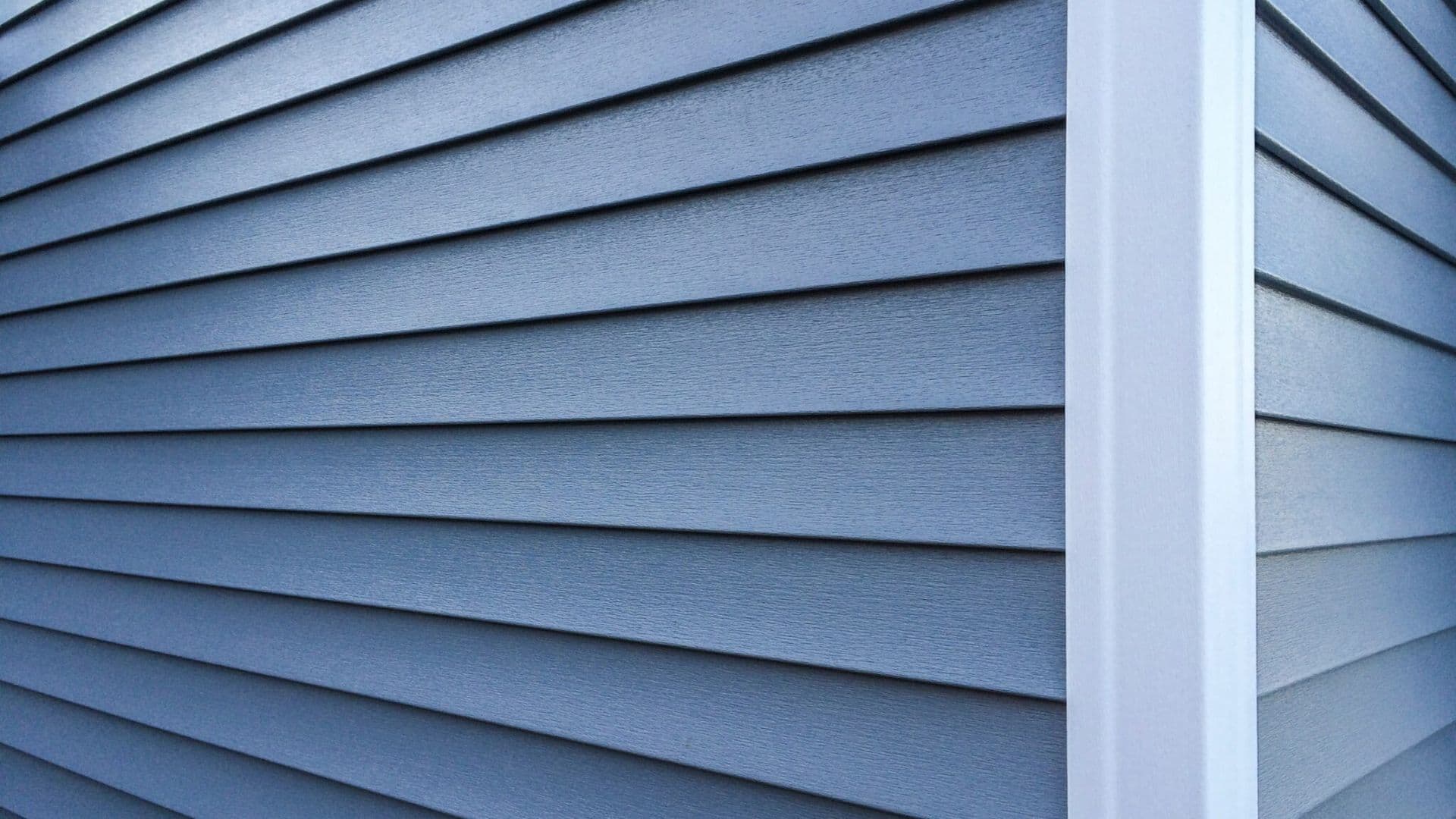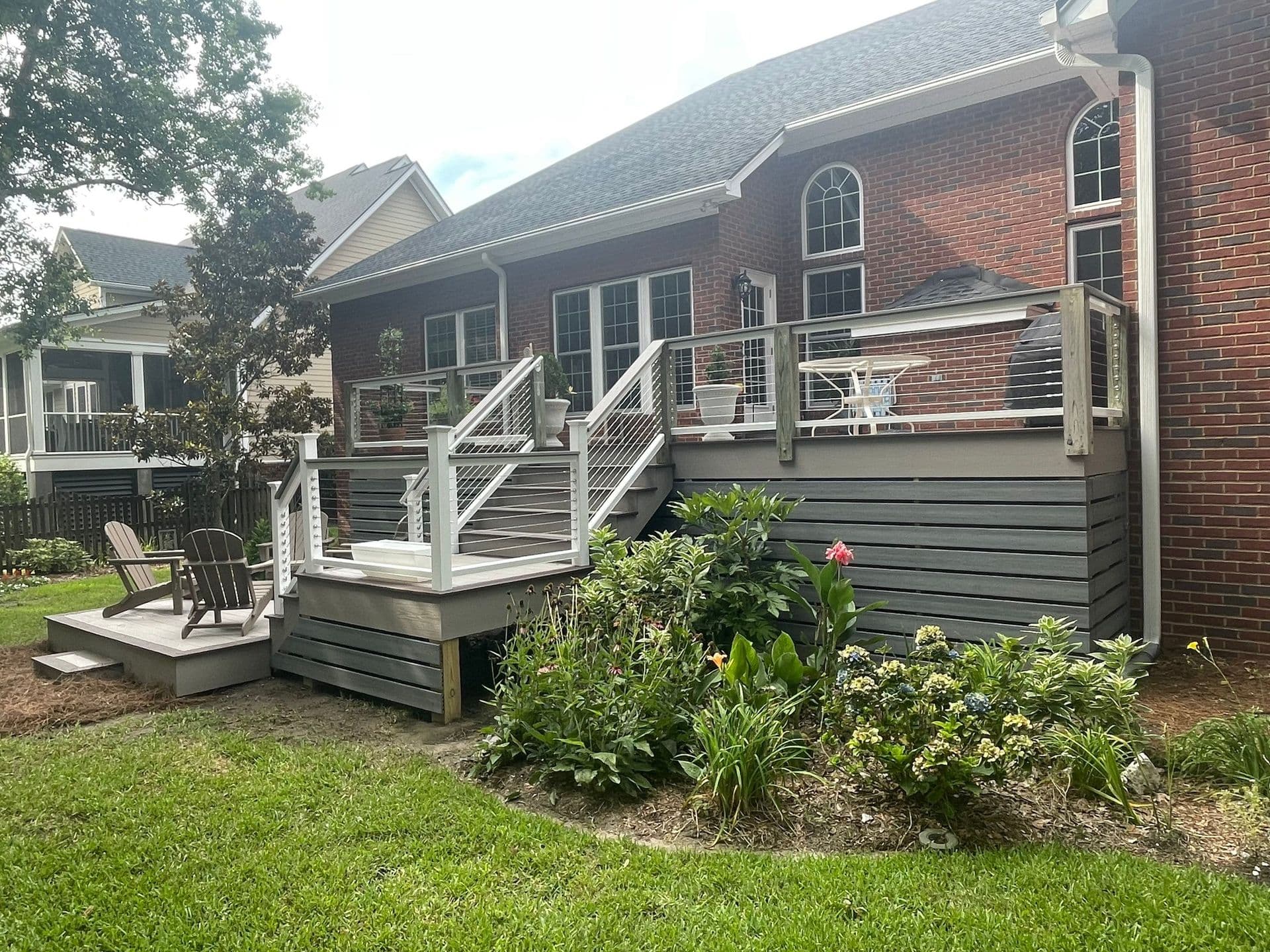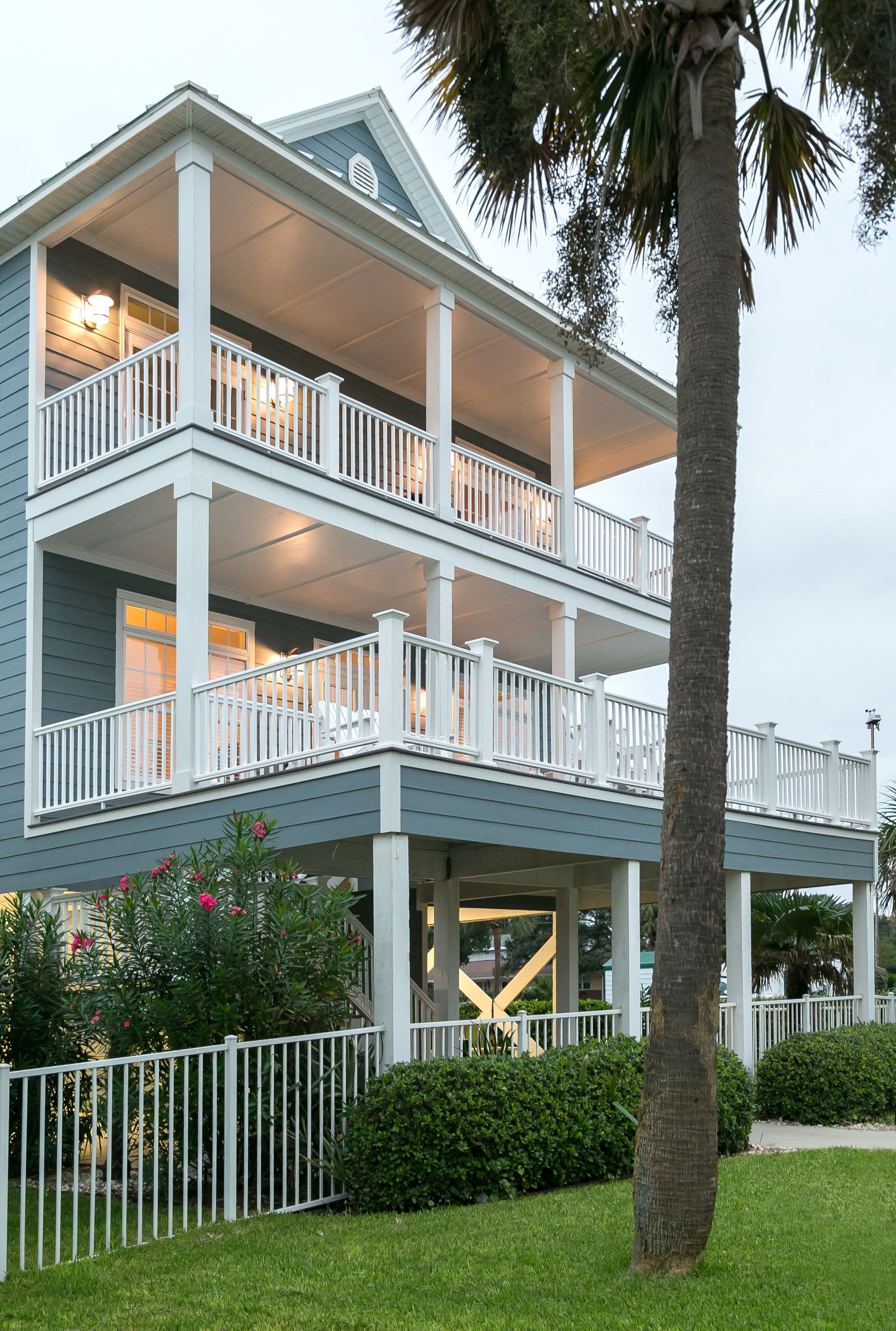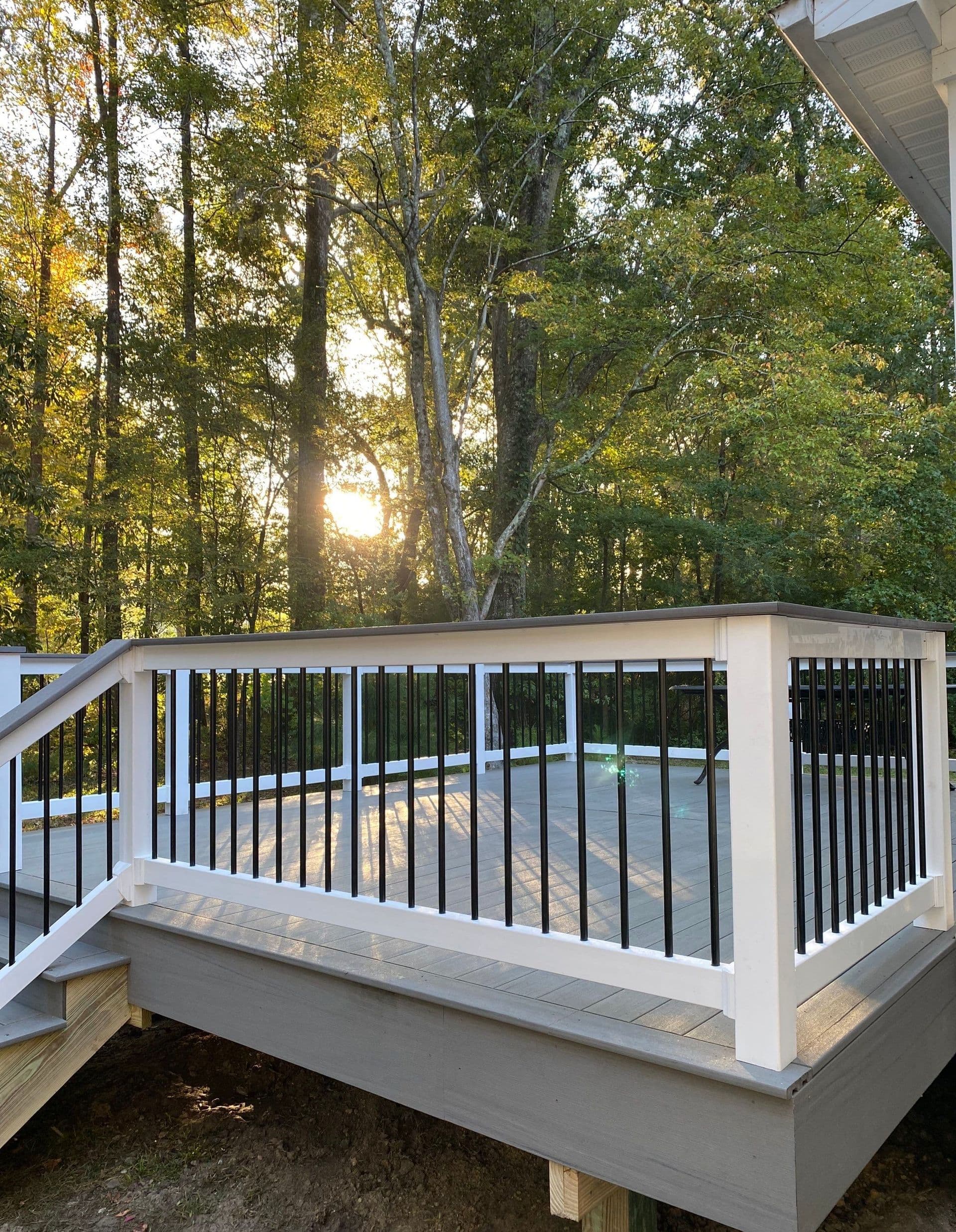Understanding Vinyl Siding Warping: Causes and Solutions

Vinyl siding is one of the most popular exterior cladding options for homes today. It offers affordability, durability, and low maintenance compared to other sidings like wood or stucco. However, vinyl siding is still susceptible to warping and distortion over time. Learning what causes vinyl siding warpage and how to prevent it will help homeowners extend the lifespan of their siding.
At Contract Exteriors, we specialize in the installation of top-quality vinyl siding brands. We want to ensure our customers get the best performance from their vinyl siding. In this article, we’ll explore the common causes of vinyl siding warping and effective solutions to stop warpage in its tracks.
What Causes Vinyl Siding to Warp?
Vinyl siding warping occurs when the siding distorts from its original flat shape and begins to bend, twist or buckle. There are several potential culprits behind vinyl siding warpage:
Improper Installation
One of the most common triggers of warped vinyl siding is improper installation. When siding panels are nailed too tight or without the proper spacing, it does not allow room for expansion and contraction. The resulting buckling and rippling can be unsightly and reduce the siding’s lifespan. Our vinyl siding installation guide provides tips for proper spacing and nailing to prevent warping issues.
Direct Sun Exposure
Intense sunlight and UV rays can degrade vinyl siding over time, causing the material to soften and slowly distort out of shape. Areas of siding facing south or west tend to be most vulnerable to sun damage and warping. Strategic landscaping, like planting trees or shrubbery to shade highly exposed areas, can help minimize this risk.
High Temperatures
Vinyl naturally expands when temperatures rise and contracts as temperatures drop. Significant heat exposure can lead vinyl siding to expand beyond its limits, resulting in buckling, rippling, and other warping issues. Darker vinyl siding colors are especially at risk because they absorb more heat. Using lighter siding colors is one way to reduce warping risks in hot southern climates.
Poor Ventilation
When there is inadequate airflow behind the vinyl siding, heat and moisture can get trapped in the space between the siding and the exterior wall. This buildup of heat behind the siding can cause the material to warp and deform over time. Ensuring proper ventilation, through vented soffits or the strategic use of siding vents, allows heat to dissipate and minimizes warping risks.
Low Quality Materials
Cheaper, lightweight vinyl siding or siding with a thinner gauge is naturally more prone to warping and distortion issues compared to premium, heavy-duty vinyl products. Investing in quality materials from reputable brands results in more durable, resilient siding that better withstands warping. At Contract Exteriors, we exclusively install top-tier vinyl siding to give your home lasting performance and beauty.
Improper Storage and Handling
Vinyl siding that gets bent, twisted, or damaged before installation is much more likely to have warping problems down the road. Dents and creases from improper storage or handling negatively impact the structural integrity of the siding. Following proper transport and storage protocols prevents pre-installation damage for smooth, warp-free siding.
Solutions for Preventing Vinyl Siding Warping
While some vinyl warping is often unavoidable as your siding ages, proper installation and maintenance can help minimize and prevent distortion issues. Here are some top solutions:
Choose a Reputable Installer
One of the best defenses against warped siding is hiring an installer with extensive experience and training in vinyl siding application. An expert will properly space and align the siding while allowing room for expansion and contraction. At Contract Exteriors, our siding specialists are highly trained in techniques for warp-resistant vinyl installation.
Invest in Quality Materials
Opting for premium vinyl siding, with a thickness of at least .044 gauge, provides maximum durability and resistance to buckling and rippling. Compare the thickness and features when selecting a vinyl siding brand and style for your home. Our siding experts can advise on high-quality products that withstand warping.
Allow for Expansion
Leaving adequate space between siding panels as they are installed accommodates the vinyl’s natural expansion and contraction with temperature changes. 1/4″ spacing around windows, doors, and roof lines is typically recommended. Our installers follow manufacturer guidelines for expansion spacing to prevent constriction and warping.
Improve Ventilation
Proper airflow behind the siding keeps heat buildup at bay. If needed, ventilation can be enhanced by adding vented soffits, siding vents, or house wraps with moisture barrier technologies. Our team assesses each home’s ventilation needs and addresses any deficiencies that could contribute to siding warp.
Control Sun Exposure
Strategically planting foliage to shade extremely sun-exposed siding reduces UV damage over time.
Annual Maintenance
Making siding inspections and minor repairs part of your annual home maintenance helps catch warping issues early before they worsen.
Temaperature Considerations
Darker shades of vinyl siding absorb more heat, increasing expansion and contraction forces. Lighter siding colors like cream or ivory may hold up better against warping in hot southern regions. Our siding consultants can advise on color choices to match your home’s style and minimize warping risks.
Correcting Existing Vinyl Siding Warps
If your vinyl siding is already warped in areas, don’t panic. There are solutions for straightening out those buckles and ripples:
- For minor warping, try gently bending the siding back into place by hand when the temperature is cool. This can help retrain the material.
- Use a siding removal tool to detach the vinyl planks or panels from the nails or screws. Then reinstall allowing for proper expansion space.
- In severe cases, warped siding may need to be fully replaced. A siding specialist can determine if this is necessary.
- Installing new heavier thickness siding over existing warped siding can be an affordable solution to hide imperfections.
No matter what’s causing your vinyl siding to warp, fear not! The Contract Exteriors dream team is here to save the day and restore your home’s exterior to its former glory.
Ready to transform your home and potentially save big? It’s time to take action. Reach out to us today for an evaluation and quote that could be your ticket to warp-free vinyl siding happiness. Our top-tier materials, combined with the skills of our trusted professionals, guarantee long-lasting beauty for your home’s exterior.
Outstanding Reviews
Brooks was my contractor on the project. He was awesome! He was there with me every step of the way! Eugenia was very helpful in the office and assisted me in getting the HOA approval. Jason explained the warranty process and even brought me a cake!
Everyone we came in contact with was very cooperative and easy to work with. It was a pleasant experience from the first online chat. They listened to us and helped solve any issues we were concerned about
Wow, this company goes above and beyond. From the very first reach out to the very last interaction once the job was completed. Everything was done first class. The quality of work, the constant communication and level of service was like nothing I’ve ever experienced with any contractor. I priced out a couple different contractors compared to contractor exteriors and I will tell you I would have paid more just to have this experience with them. I had Jonathan as my project manager and he was exceptional.
Very happy with our new Timbetech front porch deck and steps with AZEK facia and risers. Everyone at CE was responsive and very professional explaining every step in detail! We have several homeowners in our community who have already asked for contact info info. Jonathan is a very good project manager and ensured we were satisfied with the quality, cleanliness, and appearance of our new front porch! Thank you!
In choosing a company to replace our deck, we researched and decided to use Contract Exteriors. We definitely made the right choice. We are very pleased with the results. Special thanks to Brooks, our Project Manager, who kept us updated and informed everyday.
Contract Exteriors did a great job for me. The entire group was very responsive, and my deck project turned out fantastic. My project, as all projects, had some surprises that were handled professionally and promptly. Randy, Brooks, and the office staff were great throughout the process. They proactively kept me informed on the status of the project. I never had to call twice to get a question answered or ask for an accommodation.
We couldn't be happier with contract exteriors and the job they did. Our beach house looks brand new with the new Hardie board and white trim. EVERYONE was friendly, well mannered, professional, and was always ready to answer any questions that we had. Miguel and his crew did an excellent job. Brooks the project manager was wonderful, and also Chad who helped us from the very beginning, also the girls in the office. We would not hesitate to use them again.
This company did an amazing job on my siding project. From start to finish they were very professional, helpful, and on time. Eugenia clearly communicated the whole process to me before they even started the project and Brooks was always available to answer my questions. He even came and ensured the cleanup was perfect and finished up the exterior lighting. Even after the project was finished this company ensured communicated to ensure everything was perfect. Super pleased. Thank you!
Everything about this group was extremely professional. Renovations can be challenging but they carefully made sure that their products and our original structures fit together seamlessly. We are truly looking forward to our new elegant deck that will be essentially maintenance free for many, many years. We will definitely use this company for future projects.
Matt Kuzdrall made our whole experience of purchasing two new roofs for our buildings at the Children's Recovery Center so easy. Matt was professional and had all the answers to any questions we had. He has followed up since our new roofs have been installed to make sure everything is still great. Matt is awesome and I would recommend him to anyone I know looking for a new roof.




Our Teams Are Conveniently Located Near You





